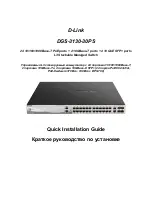
1
Getting Started
Connecting the Switch to the Network
Booting the Switch
Understanding the Utility Menu
Understanding the User Interfaces
This section describes how to start the switch and access the user interface.
Connecting the Switch to the Network
To enable remote management of the switch through telnet, a web browser, or
, you must connect the switch to the network. The switch has no IP address by
default, and
DHCP (Dynamic Host Configuration Protocol)
is disabled, so you must provide network
information by connecting to the switch command-line interface (CLI) by using a local serial connection.
To access the switch over a network you must first configure it with network information (an IP address,
subnet mask, and default gateway). You can configure the IP information using any of the following:
•
BOOTP
•
DHCP
•
Terminal interface via the EIA-232 port
After you configure network information, such as the IP address and subnet mask, and the switch is
physically and logically connected to the network, you can manage and monitor the switch remotely
through SSH, telnet, a web browser, or an SNMP-based network management system. You can also
continue to manage the switch through the terminal interface via the EIA-232 port.
Note
Some switches provide a Service port, an Ethernet port usually located on the back on the
switch, as a dedicated management port. On switches without a Service port, you use one of
the network ports.
After you perform the physical hardware installation, you need to make a serial connection to the switch
so that you can do one of the following:
•
Manually configure network information for the management interface, or
•
Enable the management interface as a DHCP or BootP client on your network (if not already
enabled) and then view the network information after it is assigned by the DHCP server.
To connect to the switch and configure or view network information, use the following steps:
1 Using a straight-through modem cable, connect a VT100/ANSI terminal or a workstation to the
console (serial) port.
If you attached a PC, Apple, or UNIX workstation, start a terminal-emulation program, such as
HyperTerminal or TeraTerm.
ExtremeSwitching 200 Series: Administration Guide
9










































